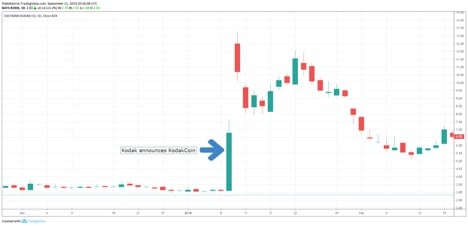A contrarian investor goes against current market trends. He buys out of favor assets that are being slammed on CNBC every day. He shorts the market’s favorite growth stocks. He’s the cooky investor who has a portfolio that is long GameStop and short Square.
Their philosophy can be encapsulated as: “If everyone has bought it, there’s no buyers left,” and “It’s so popular that all the sellers have already sold.” They stand staunchly against the efficient market hypothesis and believe the market irrationally overreacts to catalysts, giving him an opportunity to take the other side of the trade.
The Psychological Bias That Fuels Contrarian Investing
There’s some scientific evidence that investors underreact to news as well. In the mid-1970s, Daniel Kahneman and Amos Tversky discovered the representativeness heuristic, a psychological bias that leads investors to underreact or overreact to new information in regards to their investments.
Essentially, when a news story comes out that concerns a stock in their portfolio that forces them to adjust their view on that stock, they use the stock’s historical performance to judge the future performance. In other words, investors will underreact to bad news in their favorite stocks and overreact to bad news in their least favorite stocks.
This bias is what leads to inefficient prices that contrarians make their livings from.
Contrarianism for Contrarianism’s Sake
Howard Marks has said that “good investing is inherently contrarian,” but it’s dangerous to be contrarian for the sake of contrarianism. During a presentation, Michael Mauboussin addressed the fallacy of contrarianism for contrarianism’s sake:
“Being a contrarian for the sake of being a contrarian is not a good idea. In other words, when the movie theater’s on fire, run out the door, right? Don’t run in the door…. Successful contrarian investing isn’t about going against the grain per se, it’s about exploiting expectations gaps. If this assertion is true, it leads to an obvious question: how do these expectations gaps arise? Or, more basically, how and why are markets inefficient?”
Contrarian Investing: Winners vs. Losers
A 1985 study by DeBondt and Thaler further proves the efficacy of contrarian investing. They composed two portfolios, one of the prior year’s best-performing stocks, and one of the prior year’s worst-performing stocks. The study was conducted on the period between 1933 to 1978, being rebalanced every 60 months.
Examples of Successful Contrarian Investing
Jim Chanos Early Call on Baldwin-United
Jim Chanos’ first short call in his career was on piano company turned financial services firm in 1982. The firm was consistently growing and was loved by Wall Street for it. Months before Chanos’ report was published, Fortune magazine published a profile of the company’s CEO, praising his performance.
Baldwin began selling a new, highly profitable type of annuity to their clients and was paying brokers 5% commission to sell them. The product called the Single Premium Deferred Annuity and when the SDPA was launched, Baldwin’s stock began flying upwards.
Wall Street didn’t pay attention to the massive interest rate risk Baldwin was exposed to by underwriting these annuities which were high yielding. If rates were to drop, Baldwin would suffer massive losses. What’s more, is that Baldwin was also improperly recording tax credits
The rest of Wall Street ignored Chanos and his sell recommendation until a notable Forbes writer published a bearish story on Baldwin. Soon after, the company filed for bankruptcy.
Sahm Adrangi: Eastman Kodak
In January 2018, Kodak announced a new blockchain-based image rights platform, to be supported by their new cryptocurrency KodakCoin. Their stock quickly spiked, fueled by the blockchain hype at the time. Investors were in a frenzy to get exposure to crypto and blockchain projects. Kodak mentioning the word “blockchain” in a press release was all it took for the stock to quadruple on the day of the announcement.

Shortly after, Sahm Adrangi’s firm Kerrisdale Capital published a bearish report on Kodak’s stock, announcing their short position. The report cited the KodakCoin’s lack of credibility in developing successful blockchain projects and a checkered history of some of the key people involved.
Here’s a biting piece of the report:
“A dying relic of American manufacturing licenses its brand to a blockchain project and immediately creates over $300m of value. Along the way Kodak board members conveniently grant themselves shares the day before the announcement, a stock promoter with a checkered past is engaged for PR, and a group of German copyright trolls reinvent themselves as blockchain-enabled image platform managers.”
Here’s the stock’s performance since the announcement:

Before you make your next trade, you'll want to hear this.
MarketBeat keeps track of Wall Street's top-rated and best performing research analysts and the stocks they recommend to their clients on a daily basis.
Our team has identified the five stocks that top analysts are quietly whispering to their clients to buy now before the broader market catches on... and none of the big name stocks were on the list.
They believe these five stocks are the five best companies for investors to buy now...
See The Five Stocks Here
Discover the 10 Best High-Yield Dividend Stocks for 2025 and secure reliable income in uncertain markets. Download the report now to identify top dividend payers and avoid common yield traps.
Get This Free Report